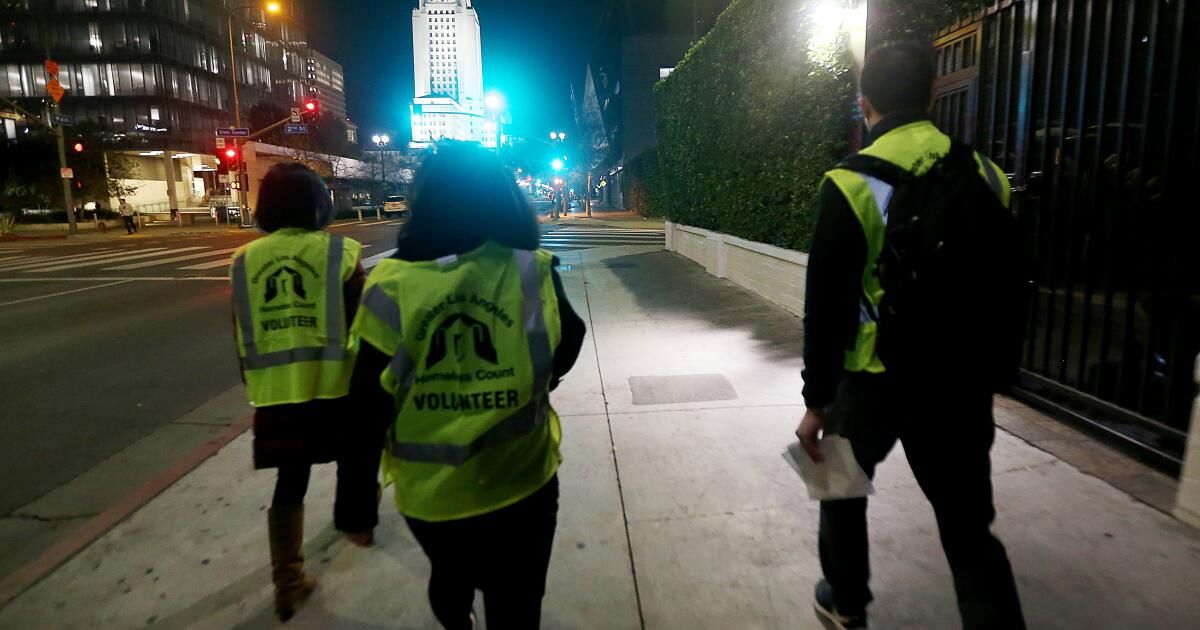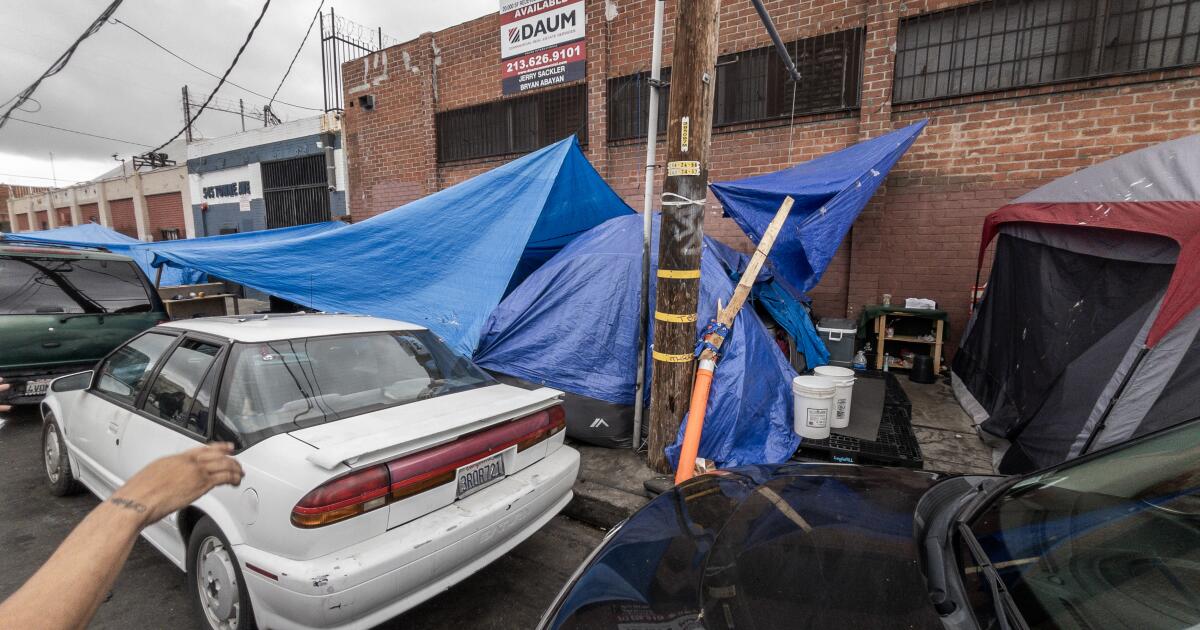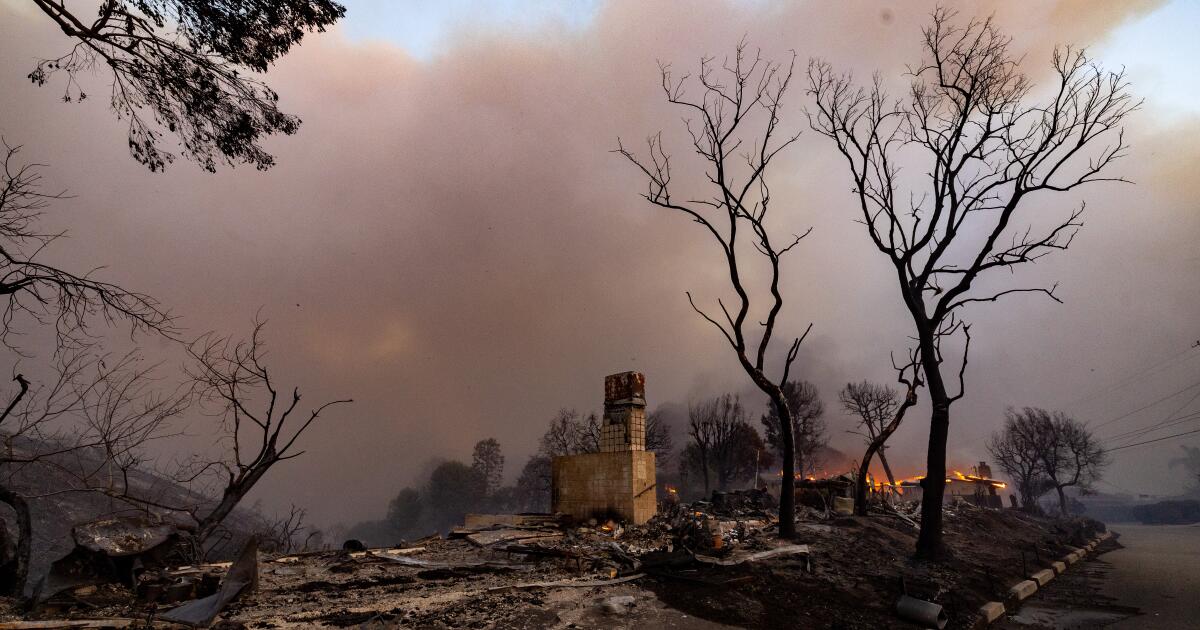In just over a week, Legions of Volunteers unfolds throughout Los Angeles County to tell the homeless. In the course of three nights (from February 18 to 20), volunteers will walk or drive through the county, armed with maps of their assigned census tracts, an application for smartphones to enumerate their account and instructions not to end up people that will be counted. Without lifting the fins of a tent that you are.
The volunteers reach about 150 deployment centers, where they obtain flashlights and maps and meet in small groups for the annual point count over time, part of a national effort that generally occurs in January, but that the angels delayed due to the forest fires. They already instructed how to judge if someone is probably homeless, the volunteers point out if they told an individual, a tent, improvised housing or a car. There are no riddles how many people could be in a tent. These estimates are made later by researchers.
Some volunteers talk to the homeless people they find. Last year, in Lincoln Heights, a group of three counters in a car encountered a bus stop where a man and a woman was with a good amount of belongings. Were they people waiting for a bus? Were they homeless people with their belongings, maybe also waiting for a bus? Someone in the car rolled through the window and explained that they were at the count of homeless people. The woman standing at the bus stop proclaimed: “I am one of them!”
This is an imperfect company, of course. But there is no other company that highlights approximately 5,000 volunteers for three nights, not only to see homeless people, but to feel cold air and walk through the dark. It is uncomfortable and sometimes a bit scary (although volunteers are always told to put their personal security first and do not enter any area that feels insecure). And that is a small look at how Los Angeles nights are for homeless people.
“You cannot avoid asking yourself literally, 'What is it like to live in the concrete?' Adams Kellum will come out at each of the nights. She says that Lahsa could never afford enough professional counters to replace volunteers. “And we lose the commitment of the community if we do it,” he adds. Part of the experience of being in the count, he said, is “to know the magnitude of the humanitarian crisis.”
The agency has people living in shelters and other temporary homes as well. (Glendale, Pasadena and Burbank make their own separate counts). The Los Angeles Homeless Service Authority also conducts a one -week demographic survey by the USC School of Social Work, which uses paid data collection.
It is already underway, and almost 3,000 people had not been interviewed at the end of January.
There are other professional studies of the private sector of the lack of housing on the street. Rand's research organization has conducted long -term surveys of non -tune in. In a study by Venice, Skid Row and Hollywood, three communities with large populations of homeless people in Los Angeles, from the end of 2021 to the end of 2022, Rand's researchers found increases in the lack of housing. In contrast, the counting of points in the time of the county in January 2023 found decreases in those communities. This variation only underlines the need for the collection and analysis of continuous data, including the counting of points over time.
The count a year ago recorded a 2.2% drop in the lack of housing in the city of Los Angeles, and found the flat rate in the county in general. More dramatically, it showed a 10.4% drop in the number of homeless people who live unchanged (unlike shelters and temporary homes) in the city and a 5.1% drop in the county.
These data are important and valuable for policy formulators. But some of the deepest lessons, what volunteers experience when they go out at night, cannot be transmitted in numbers. You just have to be there.












